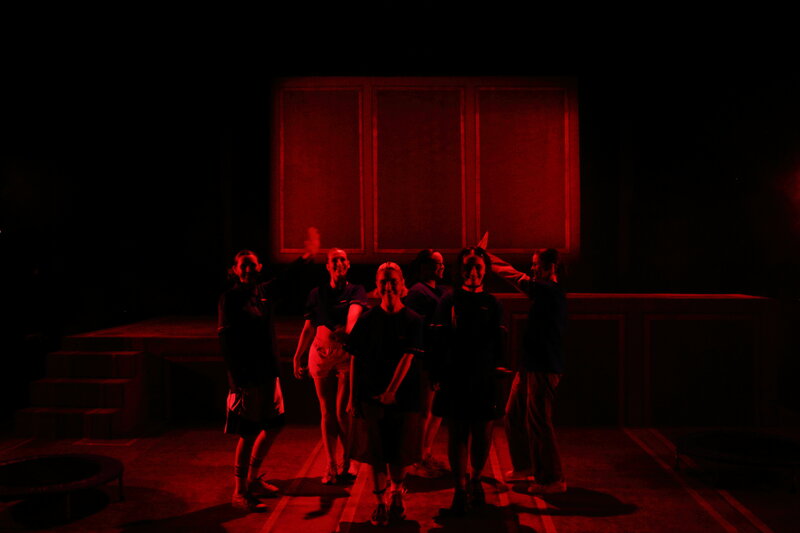Take the concept of being held against one’s will in a confined space for an extended period and add a seriously deranged personality and you have the makings of a horror thriller. But what if that deranged personality was, in fact, many people and you never knew who you were going to confront? That is where writer, director and producer M. Night Shyamalan (The Sixth Sense) has gone with his latest, self-financed movie Split.
 The central characters, the villains of the piece, can be found in the one man, Dennis (though he takes on other names) played with distinction by James McAvoy. Although he is said to represent 24 personas, eight of them can be seen in Split, including one scene when he moves – seemingly effortlessly – from one to another to another etc. As you have gathered by now, McAvoy’s character is suffering from split personality or dissociative identity disorder (DID), in his case a serious mental illness that has put him under the care of a trained and trusted psychiatrist. Though Dennis has shown her – Dr Fletcher (Betty Buckley) – 23 personalities each with distinct physical and mental attributes, one that is set to materialise and dominate all others is still submerged. Dennis is compelled to abduct three teenage girls, led by the willful, observant Casey (Anya Taylor-Joy – The Witch) … and this is bound to end badly.
The central characters, the villains of the piece, can be found in the one man, Dennis (though he takes on other names) played with distinction by James McAvoy. Although he is said to represent 24 personas, eight of them can be seen in Split, including one scene when he moves – seemingly effortlessly – from one to another to another etc. As you have gathered by now, McAvoy’s character is suffering from split personality or dissociative identity disorder (DID), in his case a serious mental illness that has put him under the care of a trained and trusted psychiatrist. Though Dennis has shown her – Dr Fletcher (Betty Buckley) – 23 personalities each with distinct physical and mental attributes, one that is set to materialise and dominate all others is still submerged. Dennis is compelled to abduct three teenage girls, led by the willful, observant Casey (Anya Taylor-Joy – The Witch) … and this is bound to end badly.
When Shyamalan started to craft the Split screenplay, he read a great deal about the most documented cases of DID and the stories of those involved had a huge impact on his imagination. Shyamalan spoke with psychiatrists in the field and gained practical knowledge about how therapists would conduct themselves in sessions with split personality patients. That inquisitiveness fleshed out the characters who became “Kevin” – the key McAvoy cohort – and Dr Fletcher. As a specific and precise director, hailing from the Alfred Hitchcock school of filmmaking, Shyamalan labours over every scene. “Night’s a perfectionist and he obsessively storyboards each shot to make sure he’s following his original vision,” says producer Marc Bienstock.
Split drew me in and, for most part, held me tight because of the flawless, driven efforts of the chief protagonist. While the film gradually peels back layers of Dennis’s personalities, it also reveals why his chief “abductee” is such a loner – for most part disassociated and disconnected from others. The mental scars are intense. While the psychiatrist has a read on Dennis, the question becomes will her understanding be enough to prevent a form of Armageddon? It becomes increasingly obviously that the answer to that question is a firm “no”.
Shyamalan has clearly chosen his place of imprisonment carefully because I found the representation of confinement and the use of shadows extremely effective devices. He steps up his audacious moves the longer the film goes. While some may see these as taking matters too far, I didn’t. Rather, I regarded them as a logical extension of Dennis’s increasing mental deterioration … and a dramatic way to move the plot forward. A tightened script, allowing for a quarter hour or so to be cut from the running time, wouldn’t have gone astray. Regardless, Shyamalan has a history of making movies that make audiences think and this is no exception.
Split is a good one to view with a partner or friend, so you can talk about it afterwards. There is also a reference in it to a previous Shyamalan film, so watch out for that. Rated M, it scores a 7½ out of 10.
Director: M. Night Shyamalan
Cast: James McAvoy, Anya Taylor-Joy, Haley Lu Richardson
Release Date: 26th January 2017
Rating: M
Alex First

David Edwards is the former editor of The Blurb and a contributor on film and television




